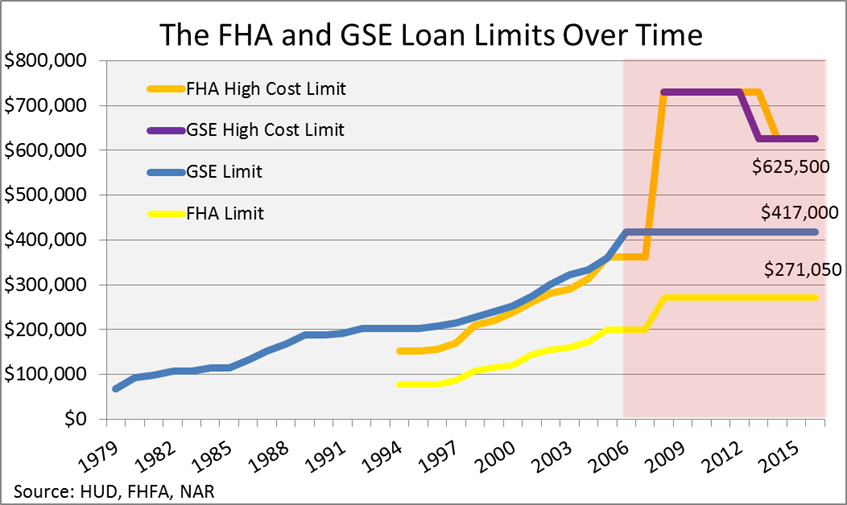In the wake of the financial crisis, the national conforming loan limit was frozen at its 2007 level of $417,000. After nearly a decade of waiting, Federal regulators may finally be ready to raise that limit as well as several other important demarcations in the mortgage market.
Expanded Limits for an Expanding Housing Market
The HERA legislation of 2008 established the current conforming loan limit of $417,000; the limit below which Fannie Mae and Freddie Mac can guarantee mortgages. The legislation also created an exemption for some areas with high median home prices. These counties became known as “high cost” or “super conforming” and their loan limits were most recently set at the lesser of 115 percentage of the local median price or 150 percentage of the conforming loan limit or $625,500. While the official release of the new limits will come later this fall, based on recent price index trends, the national conforming limit is likely to rise to a range of $418,000 to $427,000, while the high-cost limit will increase to a range of $627,000 to $640,500. Actual price growth has outpaced the 4.7 percentage forecasted by NAR in November of 2015. A change to the conforming loan limit would impact 3,000 counties while an adjustment to the high-cost limit would affect another 112 counties, the vast majority of the 3,234 counties nationwide. In addition, the FHA’s lending limits are anchored by the conforming loans limit. Thus, when the conforming loan limit rises, so will the FHA’s base limit and its high-cost limit. Recent price trends imply that these limits may be raised for 2017 and that lenders could be able to originate FHA-backed mortgages with balances up to anywhere from $271,700 to $277,550 in most areas and up to a range of $627,000 to $640,500 in high-cost areas. Impact for the Mortgage Market and Consumers The main beneficiary of this change will be consumers. Loans greater than the conforming and high costs limits are called “jumbo” and are typically held by banks or securitized into private label mortgage backed securities (PLS). However, the PLS market has not recovered from the crisis and most loans held in portfolio are of extremely high quality with large down payments, high credit scores, low debt-to-income ratios, and large reserves. Rates charged by banks for jumbo loans have been lower than those below the conforming limits in recent years. This anomaly in part reflect historically high fees at the GSEs, competition among banks for high quality jumbo borrowers, and the lack of middle-quality borrowers in the jumbo space and fees charged them. Consequently, higher limits are unlikely to impact the jumbo market as consumers who can qualify for these loans will seek out their lower rates. However, the new limits could help main-stream borrowers to access credit in higher-cost markets like Washington, New York, and many parts of California, while at the same time allowing the private market greater participation through private mortgage insurance and risk-sharing deals in the GSE space. Federal regulators are likely to announce soon the first changes to the national conventional conforming, high cost, and FHA loan limits in nearly a decade. This change is important in the face of rising home prices and limited access in the jumbo market that could hamper some would-be homeowners from participating in the market. [1] For further discussion, see here: http://economistsoutlook.blogs.realtor.org/2015/11/25/modest-improvements-in-conventional-loan-limits/ Powered by WPeMatico



